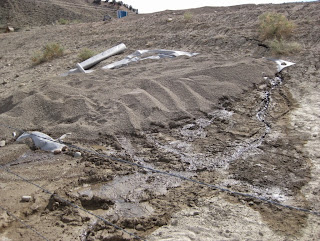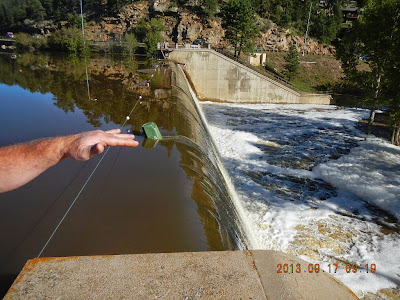Information provided by the Colorado Department of Natural Resources' Dam Safety Branch.
If you live in Colorado you are aware of the above average precipitation we have had and the saturated conditions of our ground in much of the state. Rivers are running high as is typical for this time of year, and the added moisture is making flooding more likely than ever. These conditions put added pressure on dams. The extra runoff can make streams run that normally don’t and fill small ponds and reservoirs that are typically dry. The Dam Safety Branch of the Colorado Division of Water Resources would like to remind owners of dams a few simple things they can do to prepare for this higher than usual runoff, defensive actions they can take to prevent negative impacts and notifications they can make in the event of an emergency situation.
Preparation
- If you have a low level outlet pipe, open it and lower your reservoir level before additional runoff occurs
- Ensure spillways are clear of debris and are open and functioning as fully as possible
- More closely monitor conditions on your dam. This will create a baseline of the conditions now that can then be compared to if and when the reservoir fills to the level of the spillway.
- As the reservoir fills, continue monitor conditions to ensure spillways stay clear and open, outlets remain open and functioning, and that conditions on the dam are not changing relative to your baseline conditions
- Talk with your downstream neighbors. Inform them of the higher than usual water levels and what you are doing to keep your dam and them safe.
- Have names and phone numbers available so you can contact your local emergency manager, local dam safety engineer and downstream neighbors in the event that conditions at your dam change for the worse
Defensive Actions
- A list of possible defensive actions is described in some detail in Chapter 15 - Emergency Plans, of the Dam Safety Manual, which is available online at: http://water.state.co.us/DWRIPub/Documents/DS_Manual.pdf
- In general defensive actions include the following (see Dam Safety Manual for details)
- Clearing clogged spillways and outlets
- Opening outlets as wide as possible
- Protect dam crests with sand bags or plastic tarps or sheeting (visqueen)
- Stockpiling granular materials near the dam to use in case of unusual seepage or settlement
- If time allows contact a licensed engineer for help with developing problems
- If time allows contact an excavating contractor with heavy equipment and access to repair materials
- Dam Safety Engineers with the Colorado Division of Water Resources are located strategically throughout the state and can be called with questions related to dams; Their contact information can be found at: http://water.state.co.us/SurfaceWater/DamSafety/Documents/CO_DAM_SAFETY_brochure.pdf
Notifications
- Each county has an emergency manager who is an unequaled resource in an emergency. A list of emergency managers by county can be found at the following website: http://www.coemergency.com/p/local-info-sources.html
- Chapter 15 describes some common sense steps for emergency notification of downstream residents. In general, there are two cases:
- In more populated areas the county sheriff may take the lead on notifications, if they themselves are made aware,
- In rural areas it may be more expedient for the dam owner to reach out to their neighbors. Planning for either case may be the best way to save lives
Dam Owner Liability
Lastly, we need to remind owners of dams that if you have a dam on your property, you are responsible for the safety of the dam and are liable for damage if the dam fails.
 |
| Plastic sheeting placed on a dam crest and downstream
slope to protect the dam from saturation and erosion due to overtopping |
 |
| Filter fabric and then
granular pea gravel placed over an area on the downstream slope of a dam to
control excessive or unusual seepage |
 |
| Sand bags in place on a dam
crest to prevent overtopping |








